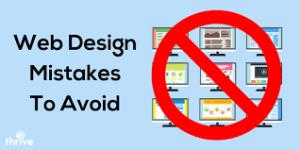So you want to go online with your physical business? Congratulations, that is the trend nowadays. Deciding and committing to take your physical business online is just the way to go – if you’re a brick-and-mortar niche product retailer or a local service provider looking to expand your reach and customer base.

Starting your own business online is simple and easy these days, and you can do it from anywhere! Here are 6 simple steps you can take right now to take your physical business online!
6 Steps to Take Your Physical Business Online
Physical businesses can be successful online. But it’s a whole new world, and there are some steps you need to take before you get your physical businesses shifting to online space. Many new businesses coming online do not take these steps, that is why many of these new online businesses fail.
Here are six steps to take your physical business online:
Do your Research
Before you take your physical business online, do your research. Ask yourself if you even need to be online. Check the pros and cons of Online vs offline businesses. And, be sure to determine your business need to go online.
First and foremost, you must define your objectives and how you intend to achieve them. This will assist you in making decisions on everything from the layout of your website and online shop to the payment methods you use and whether to offer free delivery.

Take the time to learn about the different types of products that sell well online and determine which one is best for your business. You may have a fantastic idea for an online store, but if you don’t know how to find a niche or market your business, you risk wasting time and money.
If you want to start an eCommerce site on Shopify, you should also conduct research. You must understand how eCommerce works and how it differs from traditional businesses.
Create a website
Another thing to think about when you are thinking about how to take your physical business online is to get a website. Having a website was not always required to run a successful business. However, it is now necessary.
A website serves as your storefront. It’s how people learn about you and what you have to offer. If you don’t have a website, people will look for someone else to do business with, such as an established company or someone who has their own website.
It’s also much easier to persuade people to buy from you if all of your information is in one place. Without a website, they’ll most likely have to go through multiple steps just to get there, such as opening an email, clicking on an email link, and then filling out forms before finally providing you with their contact information (and then perhaps getting another follow-up email from you).
All of this takes time and effort, time that could be spent making sales or doing more work for existing customers.

What Type of Website to Consider?
- A Blog
A blog is essentially an online journal where you post content in the form of articles, photos, and videos. It’s simple to set up, keep up with, and update on a regular basis.
- An E-Commerce site
If you want to sell products or services directly through your website, an eCommerce site allows users to browse through various categories and add items directly into their shopping carts without leaving the site once they’ve begun browsing for desired items.
You may be wondering how you can create a website that sells your products or services if you are not a technical person. Don’t be concerned! There are numerous tools available that allow anyone with no coding experience to create their own website.
WordPress, Squarespace, and Shopify are just a few examples of website creation platforms. The option you select is determined by the type of content you wish to display and the level of control you desire over design and layout.
Create a page where customers can purchase a product or service if you’re selling it directly from your website. If you use a shopping cart platform like Big Commerce or Shopify, they will handle the majority of this process for you.
Set up social media accounts
You don’t have to be a social media marketing expert to establish a presence on social media. All you need to do is commit to creating useful content and connecting with others.
When you take your physical business online, you will use social media marketing to reach out to your customers online. Signing up for accounts on the most popular social media platforms and posting regular updates is the best way to accomplish this.

It is difficult to ignore the impact of social media on your business if you are a business owner. You’re probably aware that Facebook, Twitter, LinkedIn, and other platforms are excellent places to network and expand your reach. However, it may be unclear how to use them effectively.
Here are the first five steps to getting started with social media:
- Make a profile for each platform.
Don’t just create an account; fill out all the information so that your profile looks professional and inviting.
- Make frequent posts.
Create an editorial calendar for your posts and stick to it to avoid overwhelming your followers with too much content all at once.
- Respond to comments and questions as soon as possible (within 24 hours).
Customers will gain trust and confidence in your brand’s customer service abilities as a result of this, especially if they have a problem with their order or product, which happens to everyone from time to time!
- Use social media to promote daily deals or discounts.
Customers will be more likely to engage with your brand through these channels if they see that they can receive special discounts by following you on Twitter or liking your Facebook page.
Set Up Digital Payment Options
When you have plans to take your physical business online, you must also plan to set up a digital payment option. If you own a small business, it is essential that you provide digital payment options to your customers. This will enable them to pay for goods and services online, potentially increasing your sales significantly.
While some online businesses may have the luxury of accepting credit cards through their website, many offline businesses do not. Payment processors can help with this.

A payment processor is a company that acts as a go-between for the merchant (you) and the bank or credit card company (the customer). The processor’s job is to make transactions easier by allowing merchants to accept credit card payments from customers via the internet.
This not only allows you to accept credit card payments, but it also provides additional benefits such as fraud prevention and chargeback and refund protection.
Why you should enable digital payments on your website:
- It simplifies the purchasing process for customers.
- It increases sales
- It boosts trust in your company.
Develop content for your website and social media platforms
This one is a no-brainer when taking your physical business online. Content marketing is an excellent method for attracting new customers to your website. It is also an effective method of engaging existing customers and increasing loyalty.
The process of creating content for the purpose of selling and attracting customers is known as content marketing. Content marketing can take many forms, including blogs, e-books, and infographics.

The idea is that if you create interesting, useful information that people want to read or watch, they will be more likely to share it with their Facebook and Twitter friends and followers. This increases brand recognition and traffic to your website. This brings more awareness of your business than you had before you considered to take your physical business online.
Creating content for your company’s website can help increase traffic and sales. Furthermore, creating social media posts will aid in the retention of current customers.
Be patient and give it time to grow!
The most important thing to remember is that when you take your physical business online, it will take time to grow. It is not something that occurs overnight.
I understand how tempting it is to compare yourself to others and think, “Well, they took their physical business online a year ago and they already have 1,000 new customers.” However, do not do so! Just because someone else has a successful online business does not guarantee that you will as well. You must put in the effort and give it time to mature.
It is vital not to become discouraged. If you’re just starting out, it will take some time before you see the results from your efforts. You must be patient and persevere!
Conclusion
The internet has altered how we live and conduct business. It is no longer sufficient to simply have a physical location in this day and age. You must also have an online presence.
There are numerous advantages of taking your physical business online. One of the primary benefits is that more people will be able to find your products and services. This means that more customers will visit your store and purchase from you, which means more money for you!






